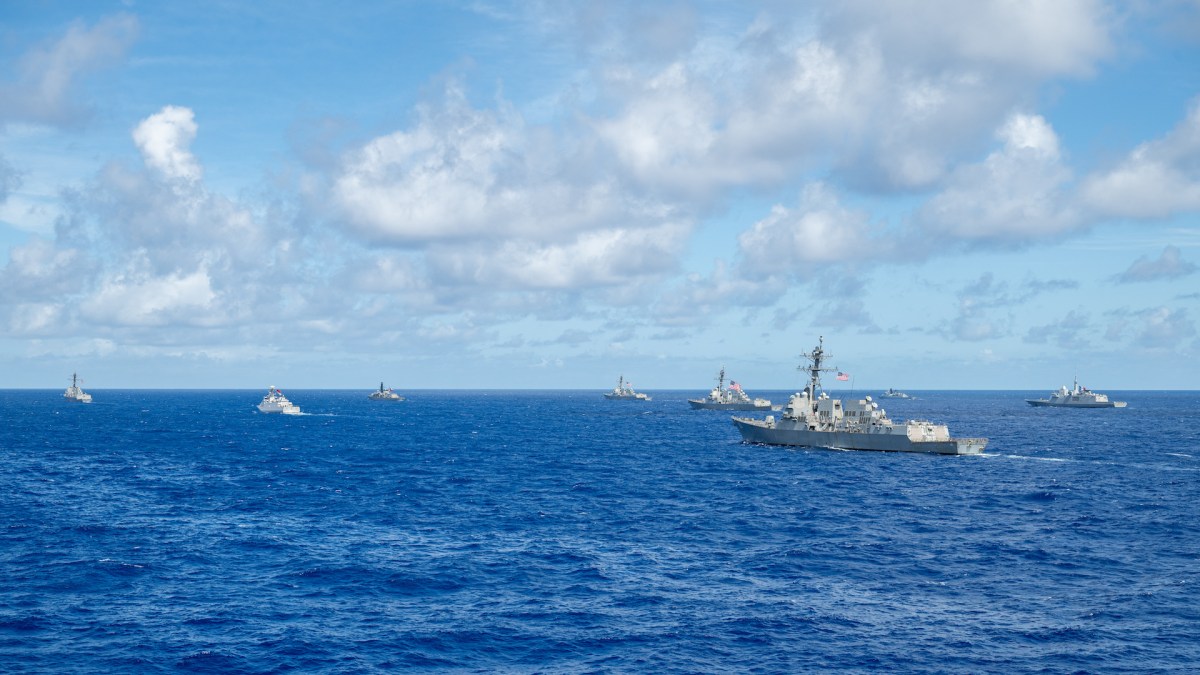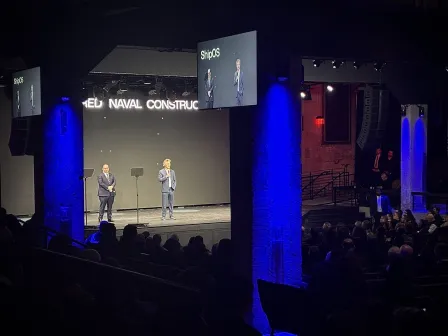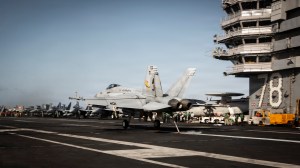Navy’s Project Overmatch steams ahead at RIMPAC

This summer’s massive, multinational Rim of the Pacific military exercise served as a large-scale testbed for technologies connected to the U.S. Navy’s secretive Project Overmatch — a key element of the service’s future warfighting capability that puts a premium on software-defined networks.
Overmatch is part of the Navy’s contribution to the Pentagon’s Combined Joint All-Domain Command and Control (CJADC2) effort to better connect the U.S. military’s sensors, shooters, platforms and personnel across the services and with key allies. Service leaders have described it as the bedrock for the joint tactical network of the future.
The 2024 iteration of RIMPAC, a biennial event that has been deemed the world’s largest international maritime exercise, ran from June 27 to Aug. 1 near Hawaii. It included participation from 29 nations, 40 surface ships, three submarines, 14 national land forces, more than 150 aircraft, and 25,000 personnel, according to the Pentagon.
“Project Overmatch has many different areas that they’ve been focusing on. When you have so many different ships, so much capability that comes to RIMPAC it’s very important to make sure that not only do you work with partners and allies and go through all the things that RIMPAC every other year does, but you also get to test things. Right? So having a detailed sort of test and evaluation plan — and 3rd Fleet did an excellent job of executing it — how Overmatch ties into every single facet of operations is important. And it’s on a sliding scale of technical maturation and time,” Cmdr. Jeremiah Daley, military director for Pacific Fleet, N9WAR, said Thursday during a panel at the Potomac Officers Club’s Navy Summit.
“RIMPAC is just another target of opportunity at a very large scale — scale that only happens every once in a while. And for RIMPAC it’s every other year to be able to use that scale, and then try to have a good plan and then execute that plan from a test and evaluation standpoint into that type of exercise. So RIMPAC is another opportunity where Overmatch went in with their plan and executed,” Daley said.
The Navy also sees these efforts as an opening to expand the vendor pool as the sea service pursues autonomous systems, uncrewed platforms and software-defined networking solutions.
“Project Overmatch has created an opportunity for other vendors to be able to provide some capabilities that may not have been available otherwise. And so it’s sort of [deleting] some of the first-to-market advantage that other vendors may have received being the first to actually coordinate with the Navy in the selection of autonomy, [and] creating an opportunity for other vendors, another place for other vendors to be able to introduce their capabilities into the Navy so now we’re not beholden to one or two vendors. Now we have a much broader spectrum of opportunities,” Capt. Eric Hutter, deputy director of the Department of the Navy’s Disruptive Capabilities Office, said during the panel.
Daley said the Navy is gaining important knowledge as it experiments with platforms such as uncrewed surface vessels, unmanned aerial systems and uncrewed underwater vehicles.
“It’s a cycle of learning, of having those other vendors into the equation that makes sure that we don’t miss a technology by a small company and how that would potentially … impact in a positive way — not just how autonomous systems work, or how we think we’re going to operate multiple USVs and UASs and UUVs, but how capable that capability could be, and just making sure that we don’t miss any of those spots,” he said.
Pentagon officials have emphasized the need to integrate allies and partners into the future warfighting construct. The word “combined” in CJADC2 parlance refers to that type of international collaboration.
Mario Miranda, director of technology transfer and international agreements at the Navy International Program Office, noted there are still some interoperability issues that need to be worked through, using Australia’s AIR6500 joint battle management system project as an example.
“If we’re going to deploy together and we’ve got our Overmatch and you’ve got your 6500, how are we going to be able to get messages and tracks from our ship to your weapon? How’s that going to work?” Miranda said during Thursday’s panel. “That’s another industry opportunity to help us to get to that technical challenge.”
Project Overmatch is a long-term effort. Officials have touted the progress that’s already been made, including a rise in deliveries of over-the-air software and capability updates to ships.
The Department of the Navy’s “core funding” request for Overmatch is $139.8 million for fiscal 2025 and $716.7 million across the five-year spending plan that’s part of the future years defense program (FYDP), according to the service.
“Using modern software methods and pipelines, we are fielding software-based networking technologies to provide as many pathways to connect and share information as possible, as well as software applications that aid decision makers and planners in executing [distributed maritime operations],” Chief of Naval Operations Adm. Lisa Franchetti said in written testimony to the Senate Armed Services Committee in May.
“To date we have fielded our first increments of Project Overmatch across multiple Carrier Strike Groups and shore command nodes. The FY25 budget request will fund our follow-on increments of this capability, while growing the architecture, adding resilience and redundancy to our communications paths, and expanding into additional domains in conjunction with our Joint partners and Allies,” she added.
The service recently passed the leadership baton for Project Overmatch to Rear Adm. Seiko Okano, who took over for Rear Adm. Doug Small as commander of Naval Information Warfare Systems Command (NAVWAR) during an Aug. 9 change of command and retirement ceremony.
“This is an opportunity of a lifetime to lead this exceptional organization, one that stands the watch day and night for our Navy’s Information Warfare capabilities and fights every day to ‘own the domain,’” Okano said, according to a Navy news release. “We are living in a time where information dominance is critical to national security. In this dynamic environment, our mission is clear: to deliver and sustain superior Information Warfare capabilities, enabling our Navy to fight and win in the information age.”






